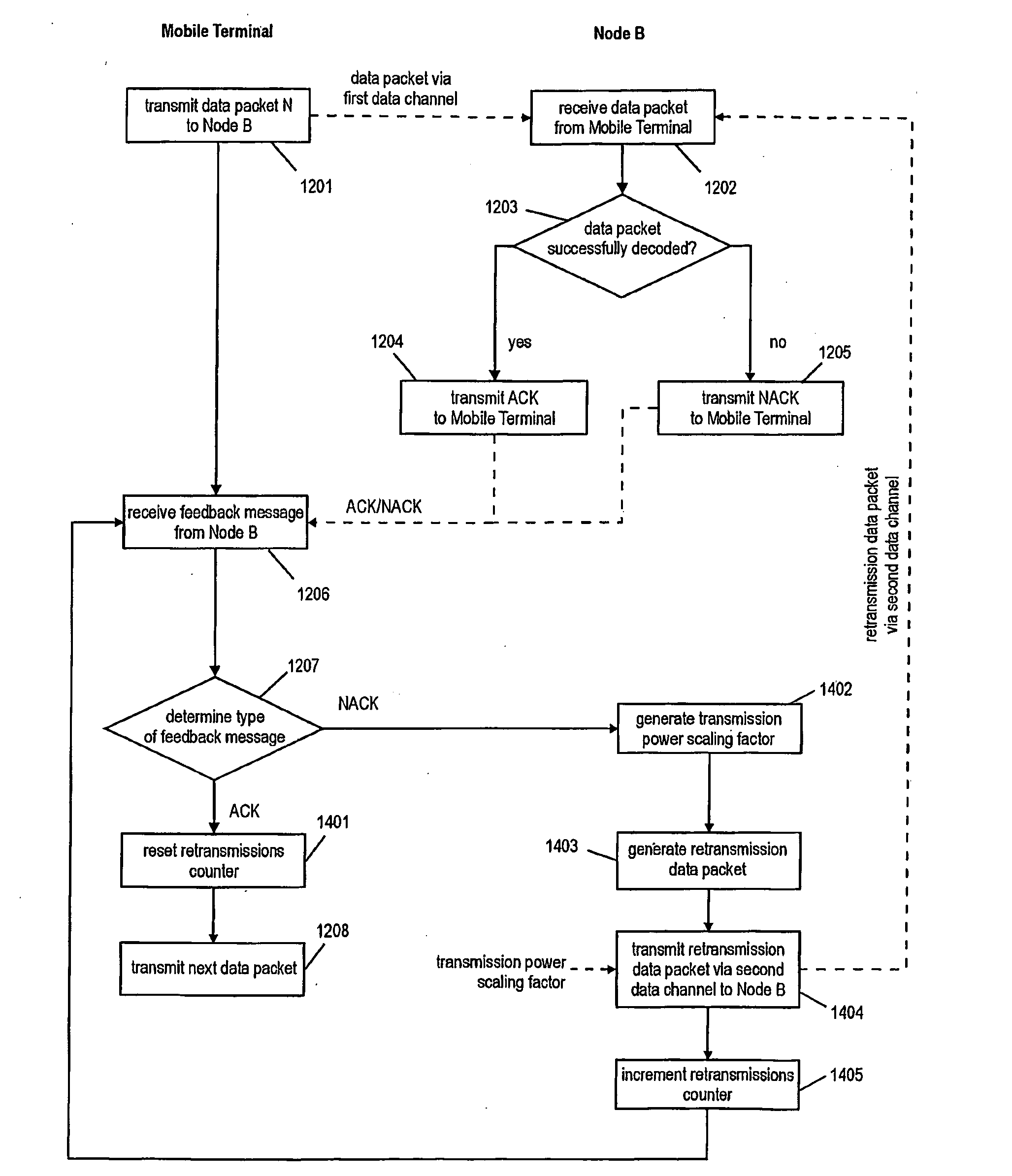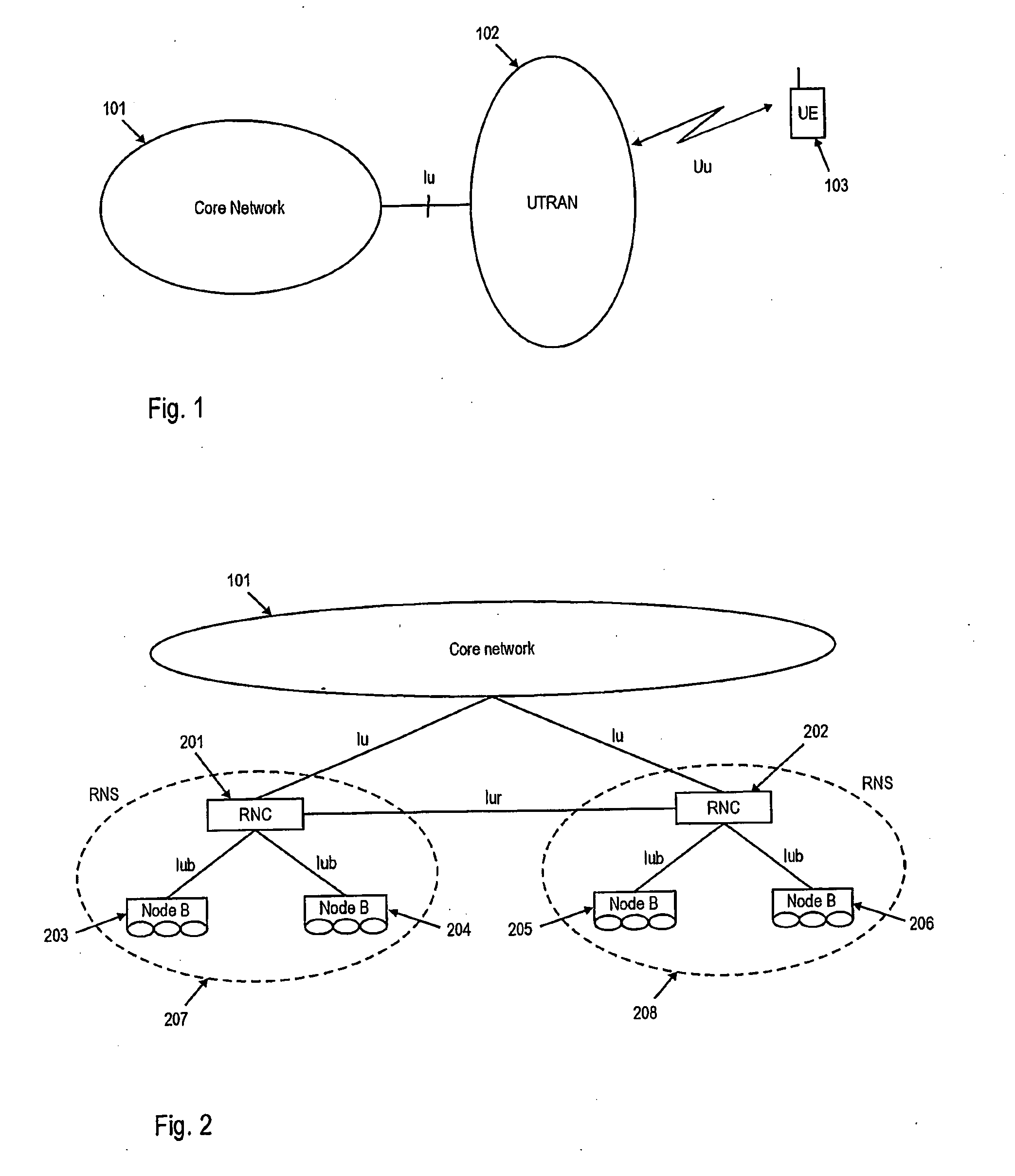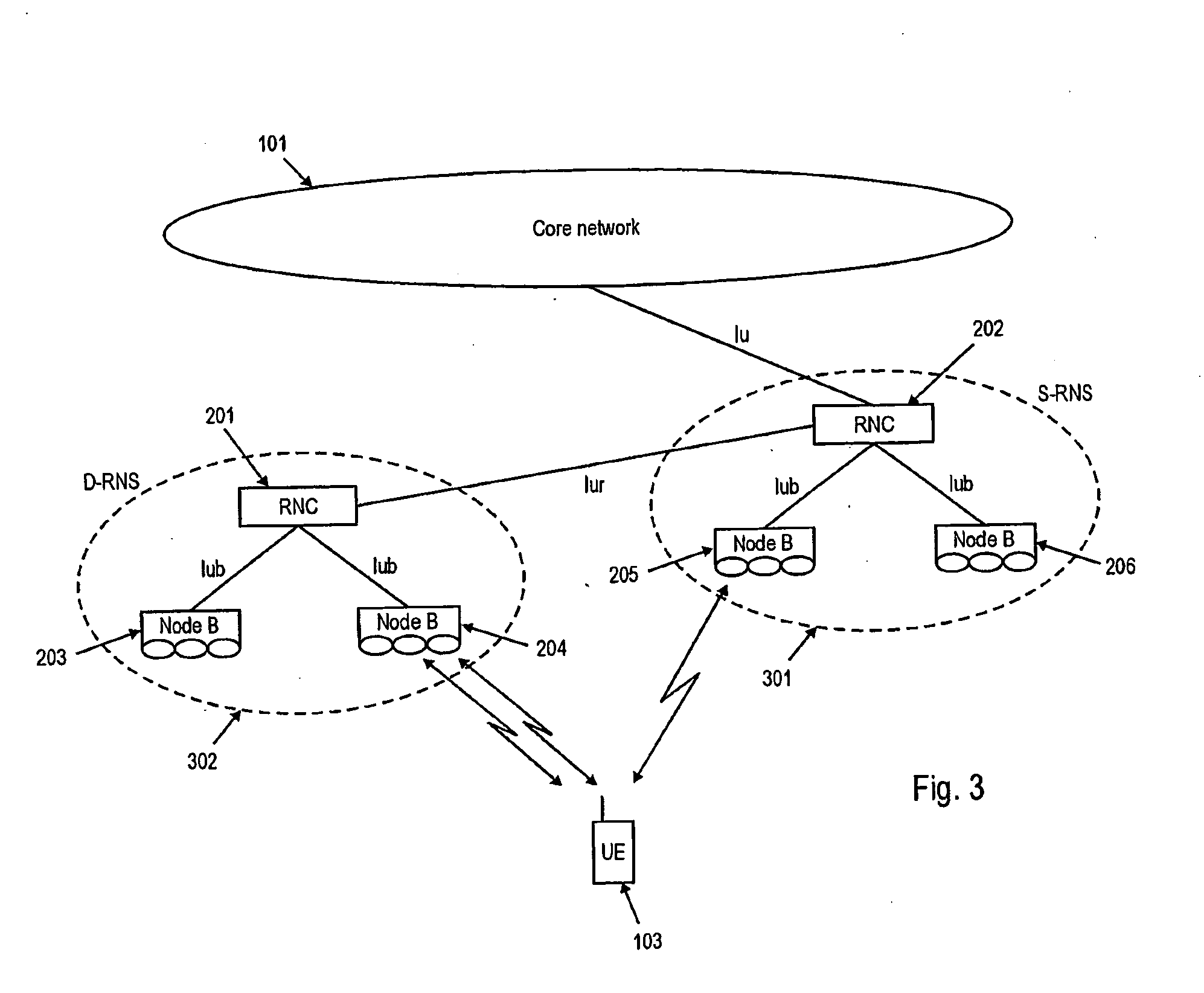Interference Limitation for Uplink Retransmissions
a technology of interference limitation and uplink retransmission, which is applied in the direction of power management, fault response, error prevention/detection by transmission repeat, etc., can solve the problems of reducing the overall latency of communications of user equipment, forming a hysteresis with respect to pilot signal strength, and handover delay, so as to reduce transmission power
- Summary
- Abstract
- Description
- Claims
- Application Information
AI Technical Summary
Benefits of technology
Problems solved by technology
Method used
Image
Examples
Embodiment Construction
[0120]The following paragraphs will describe various embodiments of the present invention. For exemplary purposes only, most of the embodiments are outlined in relation to a UMTS communication system and the terminology used in the subsequent sections mainly relates to the UMTS terminology. However, the used terminology and the description of the embodiments with respect to an UMTS architecture is not intended to limit the principles and ideas of the present inventions to such systems. Generally, the principles of the present invention may be applicable to any kind of mobile communication systems, for example to communication systems based on the IMT-2000 framework.
[0121]As will become apparent one of the various aspects of the present invention relates to the use of a different channel for providing retransmissions to a receiving entity than for providing the initial transmission. A variation of this aspect encompasses the use of different TTIs on these two channels. For example a ...
PUM
 Login to View More
Login to View More Abstract
Description
Claims
Application Information
 Login to View More
Login to View More - R&D
- Intellectual Property
- Life Sciences
- Materials
- Tech Scout
- Unparalleled Data Quality
- Higher Quality Content
- 60% Fewer Hallucinations
Browse by: Latest US Patents, China's latest patents, Technical Efficacy Thesaurus, Application Domain, Technology Topic, Popular Technical Reports.
© 2025 PatSnap. All rights reserved.Legal|Privacy policy|Modern Slavery Act Transparency Statement|Sitemap|About US| Contact US: help@patsnap.com



